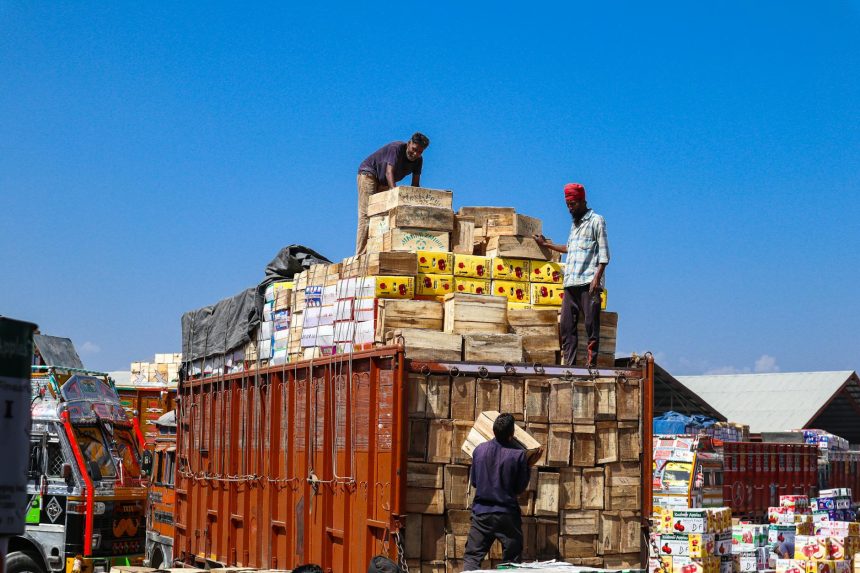India’s Supply Chains: 5 Ways Easing Tariffs Impacts Resilience
The Shifting Sands of Global Trade
The global economic landscape is in constant flux, with trade policies often acting as powerful disruptors or accelerators. Recently, discussions around easing tariffs on Chinese goods have sparked considerable debate, prompting nations worldwide to re-evaluate their economic strategies. For India, a rising manufacturing hub and a significant player in the global economy, understanding these shifts is crucial. This article delves into how potential changes in tariff structures could profoundly affect India’s supply chains, examining both the opportunities and the challenges that lie ahead for the nation’s economic resilience.
Impact of Easing Tariffs on India’s Supply Chains
A reduction in tariffs on goods from China could trigger a ripple effect across global markets, influencing everything from raw material costs to consumer prices. For India, this presents a dual-edged sword. While it could lower import costs for certain components, it also intensifies competition for domestically produced goods.
Potential Benefits for Indian Businesses
Easing tariffs might offer several advantages, particularly for sectors reliant on imported inputs. Lower costs for intermediate goods could translate into more competitive pricing for Indian finished products, both domestically and internationally. This could also stimulate economic activity and foster greater efficiency within specific industries.
- Reduced input costs for manufacturing sectors relying on imported components.
- Potential for increased trade volumes and diversification of sourcing options.
- Enhanced competitiveness for Indian exports due to lower overall production expenses.
- Greater access to a wider range of global technologies and materials.
Challenges and Competitive Pressures
Conversely, a more open trade environment could expose certain Indian industries to heightened competition from lower-priced Chinese imports. This might pressure domestic manufacturers, particularly those in nascent or less-developed sectors. Strategic planning and robust policy support will be essential to mitigate these competitive challenges and protect local industries.
Strengthening India’s Manufacturing Backbone
To truly fortify its economic position, India must continue its efforts to build a resilient and self-reliant manufacturing sector. This involves a multi-pronged approach that combines robust government support with significant investment in critical infrastructure.
Government Initiatives and Policy Support
Programs like ‘Make in India’ and Production-Linked Incentive (PLI) schemes are pivotal in boosting domestic manufacturing capabilities. These initiatives aim to attract foreign investment, encourage local production, and integrate India more deeply into global value chains. Sustained policy focus will be key to achieving these ambitious goals.
Investment in Infrastructure and Logistics
Efficient supply chains depend heavily on world-class infrastructure. Continued investment in modernizing ports, expanding road and rail networks, and developing multi-modal logistics hubs is critical. Improved connectivity reduces transit times and costs, making Indian goods more attractive in global markets.
For more insights into global trade policies and their implications, visit the official World Trade Organization website.
Leveraging Technology for Resilient Supply Chains
In today’s interconnected world, technology is no longer an optional extra but a foundational element for robust and agile supply chains. Digital transformation offers unprecedented opportunities to enhance visibility, efficiency, and security.
Digital Transformation and Automation
Adopting advanced technologies such as Artificial Intelligence (AI), Internet of Things (IoT), and blockchain can revolutionize how goods are tracked, managed, and delivered. Automation streamlines operations, reduces human error, and provides real-time data, enabling quicker responses to disruptions. This digital leap empowers businesses to predict demand more accurately and optimize inventory management.
Cybersecurity and Data Protection: A Critical Layer
As supply chains become increasingly digitized, they also become more vulnerable to cyber threats. Robust cybersecurity measures are paramount to protect sensitive data, prevent operational disruptions, and maintain trust. Implementing advanced threat detection, secure cloud environments, and comprehensive data privacy protocols are essential for safeguarding digital supply chain operations against sophisticated attacks.
The Road Ahead: Diversification and Strategic Partnerships
Building truly resilient India’s supply chains requires a forward-looking strategy focused on diversification and strong international collaboration. Relying on a single source or market can create vulnerabilities, as recent global events have demonstrated.
Building Global Competitiveness
India must continue to foster an environment that encourages innovation, enhances skill development, and promotes high-quality production standards. This will enable Indian businesses to compete effectively on the world stage, attracting greater investment and forging strategic alliances.
- Invest in advanced manufacturing technologies and R&D to improve product quality and efficiency.
- Develop a skilled workforce capable of operating in a highly automated and digitized environment.
- Diversify sourcing locations and export markets to reduce reliance on any single region.
- Foster strong public-private partnerships to drive infrastructure development and technological adoption.
- Strengthen regulatory frameworks to support fair competition and protect intellectual property.
For official information on India’s economic planning and initiatives, refer to NITI Aayog’s website.
Conclusion: Charting a Course for Resilience
The prospect of easing tariffs on Chinese goods presents a complex scenario for India’s supply chains. While it offers potential benefits through reduced import costs, it also demands heightened vigilance against competitive pressures. By strategically strengthening its manufacturing base, embracing digital transformation, prioritizing cybersecurity, and fostering diversification, India can not only navigate these global trade shifts but also emerge stronger. The journey towards truly resilient supply chains is ongoing, requiring continuous adaptation and proactive strategies to secure India’s economic future.
Ready to navigate the complexities of global trade and fortify your business? Explore our expert insights and solutions for building robust supply chains today.
Featured image provided by Pexels — photo by Saqlain Ashraf Clicks








